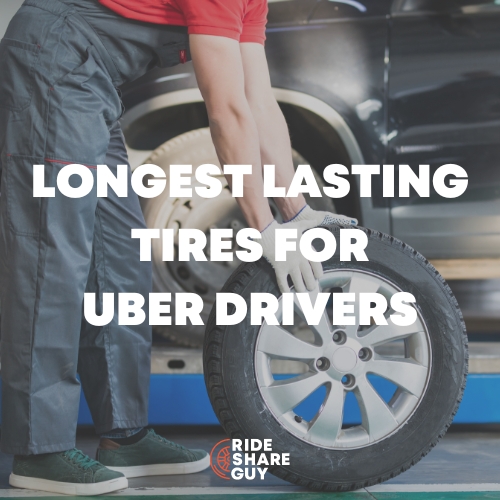Have you heard of the rideshare start up Via? We profiled it originally here, and since that article, Via has expanded, most recently into Arlington, TX. But is Via a serious challenger to Uber and Lyft? Today, senior RSG contributor John Inceanswers that question and more. Do you drive for Via or have you taken Via? Let us know what you think in the comments! You can sign up for Via by clicking here.
Via Rideshare
A few weeks ago, I gave a ride to a woman who travels regularly to New York City, and she raved all about a startup ride hailing service called Via Rideshare. I was intrigued, because the conventional wisdom about ridesharing is that it’s an industry characterized by strong network effects that would make it virtually impossible for any new players to gain sufficient traction to become a factor. Yet clearly Via was resonating with many people in NYC.
One of the chief reasons Uber has been able to raise tens of billions of dollars from investors is the assumption that ridesharing is a winner-take-all marketplace. Uber and Lyft have been in all out war for market share here in the United States. The same competitive dynamics are playing themselves out in China, Russia, Indonesia, India, and South America.
Surely there’s no room for a small, niche player in this marketplace. So what is Via doing in New York City, having recently raised another $250 million from investors – seemingly defying gravity and beating the big boys with a simple, efficient model that, for the moment at least, seems to have both passengers and drivers satisfied enough to come back again and again for the service? I had to know more.
What is Via and How Did They Get This Far?
Via’s corporate name is Via Transportation, Inc. It was founded in June 2012 by Israeli entrepreneurs, Daniel Ramot and Oren Shoval. According to TechCrunch, Via has raised around $250k from German automaker Daimler, and more among others.
In contrast to Uber, they don’t want to be everything to everybody. No flying taxis, meal delivery, driverless cars or bicycle sharing for Via. Instead, they use a very simple model with simple economics. They concentrate in high density urban markets, where public transit is available but undesirable for any number of reasons.
So far they only operate in a handful of cities, including New York City, parts of Chicago, Washington D.C. and recently Arlington, TX. The technology was also used in Austin, TX, the United Kingdom and Paris through a series of partnerships with local entities. The app is apparently based on the Sherut Taxis in Israel.
Most trips are short, and the goal is to keep drivers active through pooled rides that match passengers going in the same direction, much like UberPOOL and Lyft Line, but drop-off and pickups are on street corners rather than specific addresses.
What Distinguishes Via from UberPOOL and Lyft Line?
There is, however, one key difference between Via service and Uber/Lyft’s services. With Uber/Lyft, drivers don’t have any special incentive to do pooled rides unless they happen to be working on a bonus, so many drivers simply refuse to accept them.
Related: The Best Strategies and Hacks for Uber Quest
While adding another passenger to UberPOOL does get you additional pay, many drivers feel like it’s a lot more work for only a marginal pay increase. With Via Rideshare, the driver gets paid more if another passenger is added. The increment isn’t huge, perhaps 10-20%, but now it’s like you’re driving on a small surge.
Another advantage of Via is that they offer live support via either phone or text for drivers. Uber has recently added phone support, but that support can be hit or miss depending on your issue.
Related: The Best Ways to Get a Response from Uber Phone Support
Lyft has offered support for drivers for years, but if my experience is representative, the emergency line isn’t something one would want to rely on in an emergency. Via’s driver support is apparently much more helpful, human and friendly.
Why Should Drivers Care About Via Rideshare?
Via is significant for several reasons:
- They’re demonstrating a niche player can survive in this industry.
- They’re focusing on efficiency, especially route efficiency.
- They’re showing drivers have no particular loyalty to any one platform.
- They’re defying the (supposed) network effects of this industry.
What Are “Network Effects” and Why Do People Make Such a Big Deal of Them in this Industry?
One of the key reasons, Uber (and Lyft) have been able to achieve high valuations, despite continued losses, has to do with what is known in the tech world as “network effects”. Thomas Metcalfe, the inventor of ethernet, expressed it as, “the value of a network increases exponentially in proportion to the size of the network”.
If only one person uses a phone network, it has negligible value. If 1000 people use it, its value multiples … and so on up to a million or network of billions like Facebook and Google. The conventional wisdom held that ridesharing would exhibit network effects. It might not be a winner take all market, but clearly there wasn’t going to be room for niche players – like Via.
How Powerful are Network Effects in the Ridesharing Industry?
My take is that network effects aren’t nearly as powerful as Uber executives and investors want to believe they are. Ask yourself a simple question: if Uber dominates in Chicago, does that mean Uber will also dominate in Phoenix or Jakarta? Not necessarily – they’re all very different markets.
Perhaps the press Uber gets in one city or state will strengthen its brand awareness in new markets, but with all the bad press Uber has been getting, I’m just not sure that brand awareness can be translated into a dominance in new markets.
Via Rideshare is a shining counter-example to the conventional wisdom about Uber’s winner take all market strategy. Uber has burned through tens of billions of dollars of investor capital, and here we have a plucky startup that’s raised a fraction of what Uber’s raised, and it has customers raving about its service 3,000 miles away. Surely they’re doing something right.
Is Via Working?
Apparently so. They’re attracting drivers because the company takes less of a share of the fares.
While Uber/Lyft’s take is 25-40% (and up), Via takes 5-10%. [5% (Chicago) and 10% (Washington DC/NYC)]. It’s also more efficient, since they’re only operating in high density areas and passengers are required to walk short distances to minimize driver inconveniences.
No more making four right turns around the block in heavy traffic to get to the right side of the street to pick up the passenger. Via also offers surge in peak times ranging up to 2 or 3 times a normal fare. Via calls it Rocket Pay, but it’s still a surge.
What are the Downsides to Via From the Driver’s Perspective?
There is a downside to Via, pointed out by one of our regular commenters, Thomas Ash, in Christian Perea’s excellent article on Via. Ash writes,
“Your comments about VIA are very positive, but there is a down side also. VIA picks up on street corners, no addresses, So your pickup could be the NE corner of Wabash and Washington. If you are not in the right lanes heading in the right direction when you get the call, you’ll have to go around several blocks to position your car at that pick up point. There is also the problem of the their map. VIA does not use Waze or Google Maps. They have their own. It have no voice, so you have to watch it carefully if you are not really familiar with the pick up or drop off point. For me, it seems to lag a little. A couple of time I was past a turning point before the map’s directions point to a turn. I found that using Google Maps along with the VIA map worked fairly well.
I just wonder how long VIA will last. Their payments are based on UberX, but they flat rate trips, usually 3.95 to 5.95. I’ve had 10 trips, and not one was a multiple person trip. In Chicago VIA operates from Roosevelt Road on the south to Irving Park Ave to the north, east to the lake front and west to Damen ave. They just expanded to airport service and increased west to Western ave.. Uber, in a attempt compete like VIA has just started to test offer Uber Express, and Lyft also has something similar. If you like short trips, better support, lots of passengers, and congested driving areas, VIA is not bad… and their phone gets answered.”
What are the Barriers to Entry in Ridesharing?
To operate you need an app. But Uber and Lyft have very few patent protections and their technology isn’t that difficult to build, especially for a company like Waymo, GM or even Tesla, that has thousands of top notch engineers they can throw at a problem at a moment’s notice.
Related: How to Start a Rideshare Company
Ridesharing has grown incredibly interwoven. Softbank has investments in Uber and many of its direct competitors. Google (Alphabet) has investments in Uber and Lyft. GM has investments in Lyft and its technology. Everybody is spreading their bets around, because nobody knows who’s going to come out on top.
Meanwhile, a plucky startup like Via Rideshare moves merrily along, operating in a niche market in just a few cities, and investors don’t seem to care that they have no designs on world dominance.
Could Via Potentially be a Threat to Uber?
The short answer is: not likely. But they don’t have to be an Uber-killer to kill it in the localized markets they’re operating in. They only have to be profitable in their market niche to be attractive to investors. And if they’re offering a better deal to drivers, then drivers (and passengers) will migrate to their platform.
That’s the crazy thing about ridesharing. No matter how much money Uber and Lyft throw at their passengers and drivers in the form of bonuses and subsidized fares, if someone else comes along with a better deal, passengers and drivers will jump ship in an instant.
Is Via Profitable?
Since it’s a private company and has no legal obligation to share financials, we don’t know. But we do know that they somehow convinced investors to invest millions. Unless those investors are crazy, we might assume they have good reason to believe they’re going to get their money back and then some. Then again, I’m not sure anybody in this industry is completely sane, except of course the passengers who continue to enjoy a service at well below market rates, whether that service be provided by Uber, Lyft, or Via.
You can sign up for Via by clicking here.
Have you taken a Via ride or are you currently a Via driver? What do you think of Via?
-John @ RSG






